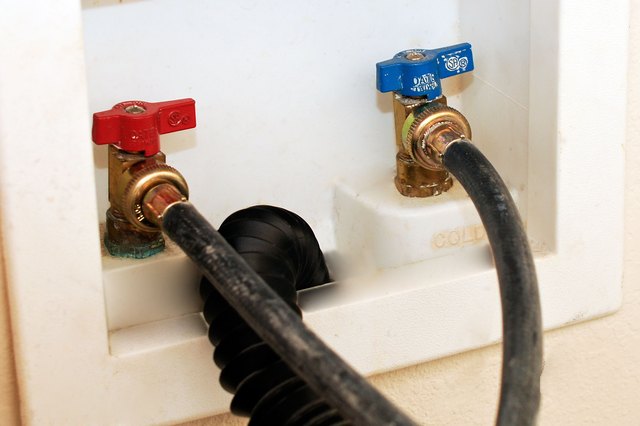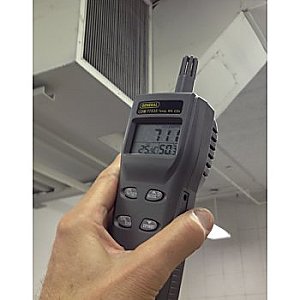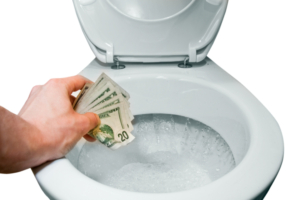Learn How to Disconnect A Washing Machine
Disconnecting a washing machine may seem like a daunting task, but with the right tools and some basic knowledge, it can be a relatively simple process. Whether you are moving to a new home, replacing your washing machine, or simply performing routine maintenance, knowing how to disconnect your washing machine is a valuable skill. This blog will outline the steps you need to follow to safely disconnect your washing machine.
To disconnect a washing machine, you will need the following tools:
- Adjustable wrench: This tool is used to loosen the connections on the water hoses.
- Pliers: Pliers are used to loosening the connection on the drain hose.
- Bucket: A bucket is useful to catch any water that may spill out during the disconnection process.
Additionally, you may also need:
- Label maker or masking tape and a pen: To label the electrical wires for easy re-installation later.
- Gloves: To protect your hands while working with the hoses and connections.
Before you start working on your washing machine, you should turn off the water and power supply to the machine. This is a safety step to prevent any electrical shocks while you are working on the machine.
Steps: How to Disconnect a Washing Machine
Step 1: Preparation The first step in disconnecting your washing machine is to gather all the tools you will need. You will need an adjustable wrench, pliers, and a bucket. The bucket is important as it will be used to catch any water that may spill out during the disconnection process.
Next, you need to turn off your washing machine’s water and power supply. Locate the main water shut-off valve and turn it off. Then, turn off the power supply to your washing machine either at the electrical panel or by unplugging it. This is an important safety step, as it will prevent any electrical shocks while you are working on the machine.
Step 2: Disconnecting the Water Supply The next step is to disconnect the water supply from your washing machine. First, locate the water hoses. There are usually two hoses, one for hot water and one for cold water. Next, turn off the water valves for both hot and cold water.
Now, use your adjustable wrench to loosen the connections on the water hoses. Place the bucket under the connections to catch any water that may spill out. Once you have loosened the connections, carefully remove the hoses from the washing machine.
Step 3: Disconnecting the Drain Hose The next step is to disconnect the drain hose from your washing machine. This hose is usually located at the back of the machine and is connected to a drain or standpipe. To disconnect the drain hose, use your pliers to loosen the connection. Again, place the bucket under the connection to catch any water that may spill out.
Step 4: Removing the Washer With the water and drain hoses disconnected, it’s time to move the washing machine away from the wall. Be sure to clear a path, so you don’t damage any walls or flooring. Once you have moved the machine, you need to disconnect the electrical wires. Unplug the machine from the electrical outlet and label the wires for easy re-installation later.
Step 5: Clean Up After you have successfully disconnected your washing machine, it’s important to clean up any water spills. Wrap up the hoses and drain hose and store them safely.
Step 6: Before you turn the water and power supply back on, double-check all connections to make sure they are properly tightened. Turn on the water and power supply and check for any leaks. If there are no leaks, you have successfully disconnected your washing machine.
Summary: Learn How To Disconnect A Washine Machine
Disconnecting a washing machine is a simple process that can be completed with a few basic tools and some basic knowledge. Whether you are moving to a new home, replacing your washing machine, or performing routine maintenance, following these steps will help you safely disconnect your washing machine.
The lifespan of a washing machine can vary greatly depending on several factors, including the brand, model, usage, and maintenance. On average, a washing machine can last anywhere from 7 to 12 years. However, some high-end models can last up to 15 years or more.
To extend the lifespan of your washing machine, it’s important to perform regular maintenance and follow the manufacturer’s instructions for proper usage. This includes cleaning the machine regularly, using the appropriate amount of detergent, and avoiding overloading the machine.
It’s important to address any issues or repairs promptly, rather than ignoring them and letting them worsen over time. By properly maintaining your washing machine and addressing any issues as they arise, you can extend its lifespan and ensure that it continues to perform effectively and efficiently for many years to come.
If you ever feel unsure about any part of the process, it’s always best to consult with a professional.
I hope this has been helpful. If you have additional questions and want to get in contact with GGR Home Inspections please send us a note, text, or call.







Pingback: home care